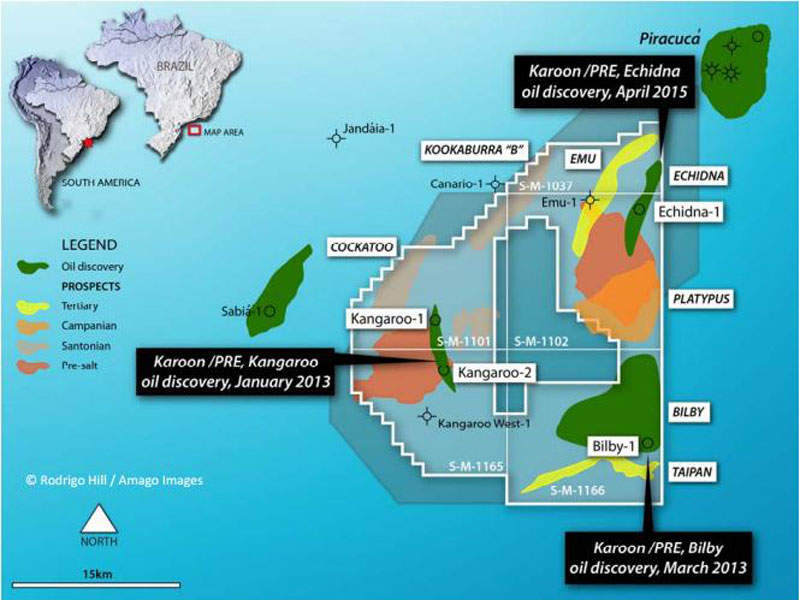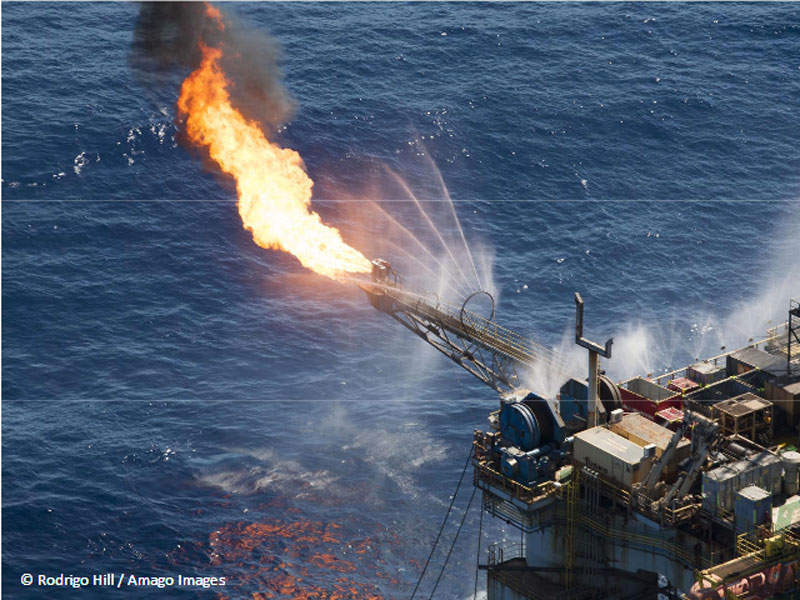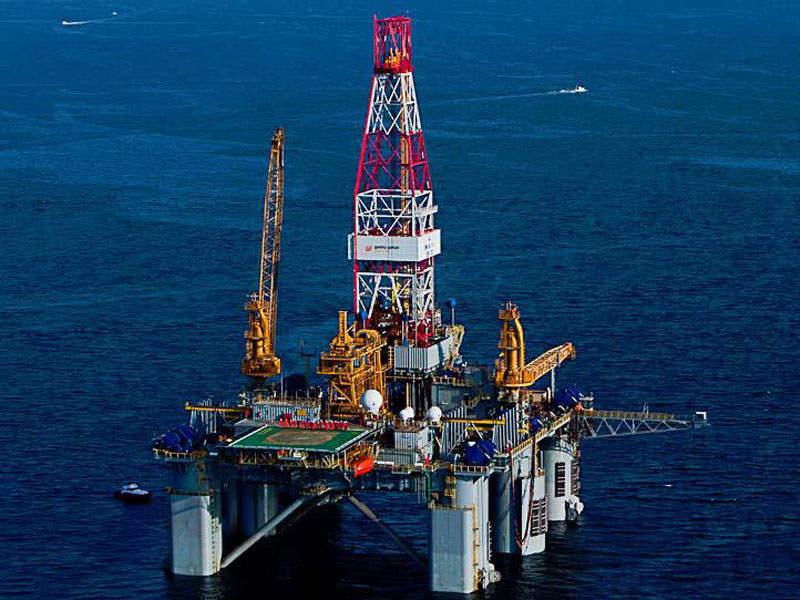
Echidna oil field is located in the S-M-1102 exploration block of the pre-salt Santos Basin, approximately 112km off the coast of Santa Catarina, Brazil, in mid-water depths of 400m.
The field is estimated to contain contingent resources of 75 million barrels of oil. It is fully owned by Karoon Gas Australia, which is currently planning appraisal activities to facilitate full field development.
Karoon farmed out 35% interest in the blocks to Pacific Exploration and Production in 2012, but subsequently re-acquired the interest in 2016 after Pacific filed for insolvency protection.
The appraisal campaign is expected to commence this year, with front-end engineering design (FEED) also scheduled for later in 2017.
First production from the field is expected in 2020.
Echidna oil field discovery
Echidna oil field was discovered by the Echidna-1 exploration well, which was drilled by the Olinda Star semi-submersible rig in March 2015.
Echidna-1 was drilled to a depth of 2,400m and intersected a 213m gross oil column in the Paleocene and Maastrichtian age reservoirs.
The Paleocene reservoir contained a 75m gas column with a net pay of 54m and an average porosity of 25%. The reservoir was tested and flowed at a rate of 4,650 barrels of oil per day (bopd) with 39.5° API oil, with a gas-oil-ratio (GOR) of 750scf/stb.
The Maastrichtian reservoir contained 113m gas column with a net pay of 50m and an average porosity of 21%.
Oil samples taken from the reservoir were similar to those from the Paleocene reservoir, indicating similar oil gravity and GOR.
Another 7m-thick deeper oil column was also intersected in the Maastrichtian reservoir with an average porosity of 23%.
Appraisal of the Santos basin oil field
Karoon plans to drill two appraisal wells at the field, which will be named Echidna-2 and Echidna-3.
Echidna-2 will be designed to enter the reservoir in down-dip position, while Echidna-3 will be designed to enter in an up-dip position.
The technical information and detailed data about the reservoir properties will be collected through a conventional coring programme, and is expected will form a critical link in defining / modifying the full field development programme.
The Olinda Star semi-submersible drilling rig has been contracted again to drill the two appraisal wells, with two further optional wells also planned in the blocks operated by Karoon.
Echidna field development plan
Karoon is planning for a standalone development for Echidna with a peak production rate of 30,000bopd.
The site’s development plan envisages the creation of three production wells, two injection wells and a leased floating production storage and offloading (FPSO) unit. The FPSO will be moored in a maximum water depth of 400m.
The production wells are estimated to cost a combined $280m, and will utilise extended reach horizontals from five wells.
Combined water and gas injection from four wells will be used for the injection wells, which are estimated to cost a further $150m.
The Kangaroo field is located in block S-M-1165 near Echidna, and is planned for development as a tie-back at a later date.
Contractors involved
QGOG Constellation Group is supplying the drilling rig for the exploration and appraisal activities.
Wood Group secured a contract to provide engineering services for the development of the field.
The deal will see the company evaluate the technical requirements of an FPSO and subsea installations, and all bid packages.






